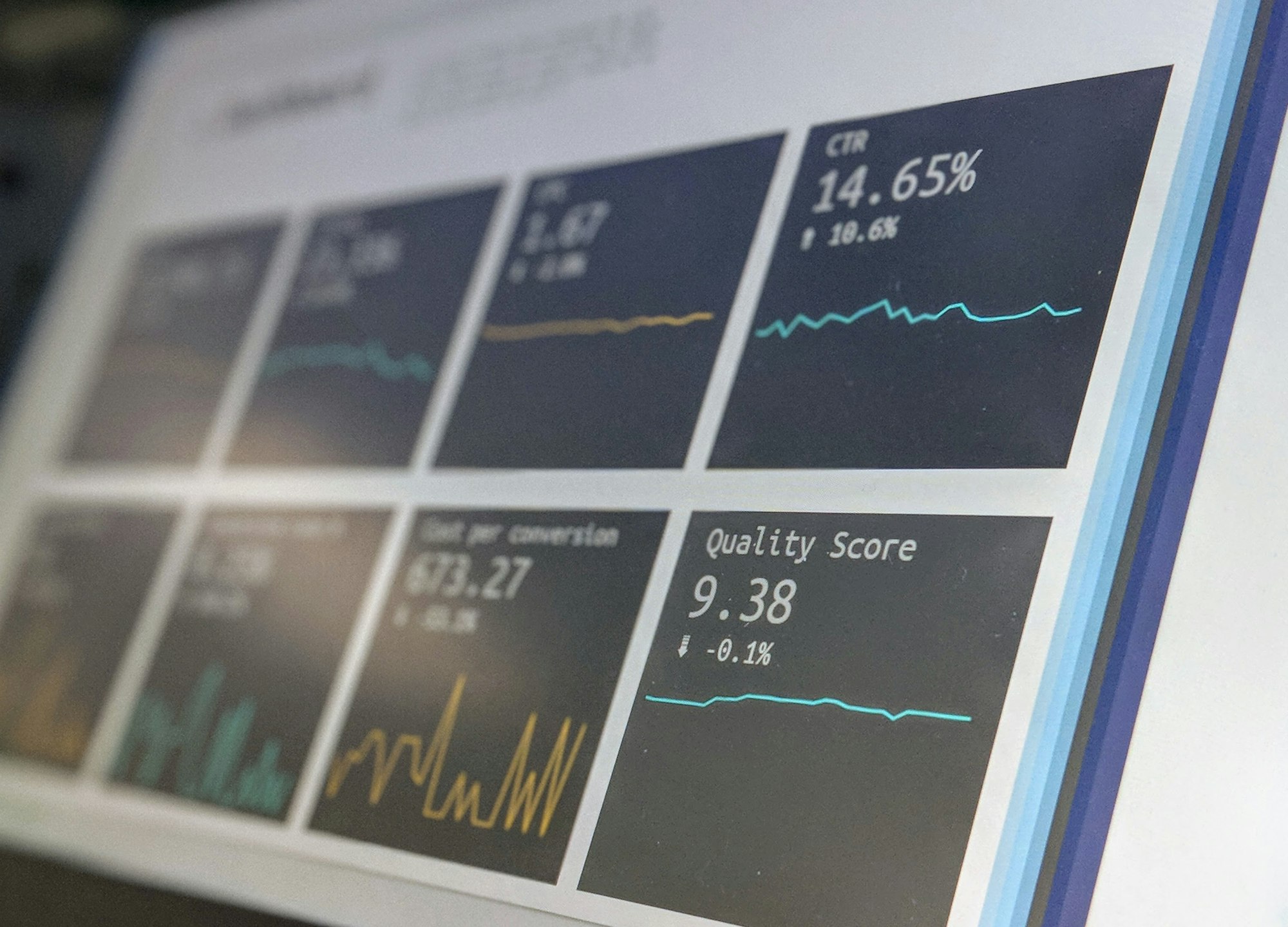OMS: The Low-Hanging Fruit of Digital Transformation
The term "digital transformation" seems to be everywhere. From your local corner shop to the big players in the corporate world, everyone's jumping on the bandwagon.
And why not? Those who lead the charge in digital transformation enjoy significant advantages over their less tech-savvy counterparts.
Now, let's be real—digital transformation isn't a magical fix. It's not a one-size-fits-all solution—rather, it's an ongoing process that requires commitment.
However, the good news is that even if you're not a tech giant, there's a way to start reaping the benefits without overwhelming yourself.
That is why your first goal should be to aim for the low-hanging fruit of digital transformation—those simple yet effective steps that can propel your business forward.
When it comes to low-hanging fruit, there is no better place to start than adopting an Order Management System (OMS)—a tech solution that can bring immediate competitive gains for your business.
By the end of this blog, you'll not only understand this transformative technology, but you'll be ready to take the first steps towards unlocking its potential for your business.
After all, the digital transformation is all about taking the leap, embracing the change—and watching your business flourish as a result.

The Digital Transformation Low-Hanging Fruit
What exactly is "digital transformation"? In simple terms, it's about bringing technology into every nook and cranny of your business—from operations and marketing to customer service, HR, and administration.
Why bother? Because it's an easy way to become more efficient and outshine your competition.
Now, you might be hesitating to dive into digital transformation, thinking it's a daunting task. But here's the truth—the challenges are real, but so are the opportunities.
Instead of letting the hurdles scare you off, focus on the low-hanging fruit first. These are the easy wins, the quick wins, the tasks that you can tackle without breaking a sweat.
Starting with the easy stuff provides your organisation with valuable learning experiences. Once you've nailed the basics, you'll be better equipped to tackle the more complex challenges that lie ahead.
So, don't shy away from the low-hanging opportunities. Embrace them, learn from them, and watch as they pave the way for your business to conquer the heights of digital transformation.

Revolutionise Your Business with an Order Management System (OMS)
What are low-hanging fruit when it comes to digital transformation? These are changes that not only make a positive impact but are also practical and won't burn a hole in your pocket. The key is to focus on ideas with strong potential and low effort, backed by solid proof.
So, what would be a smart first move to make? One of the best strategic decisions you could make for your company is to introduce a robust Order Management System (OMS) into your business workflow.
But what is an OMS? Think of it as your digital ally—technology tools that help retailers and distributors efficiently manage, sell, and fulfil orders without breaking a sweat. It's the one-stop-shop for overseeing orders across all your sales channels, both online and offline.
Now, here's the genius of this technology—an OMS streamlines and automates your orders and product fulfilment. No more grappling with inefficient spreadsheets. This digital powerhouse addresses the complexities of order management, touching on sales, inventory, and fulfilment, all in one centralised platform.

Unleashing the Power of OMS to Manage Company Data
When it comes to making a technological change, one critical area demands attention before you take the plunge—your organisation's data management. They often say, "data is the new oil," and rightly so. Effective data management isn't just a nice-to-have—it's the backbone for making informed decisions and achieving optimal results.
Often what happens in a growing company is that different departments end up working with varying versions of data—a recipe for chaos. In the modern era, our architecture should be smarter, breaking down silos and ensuring everyone operates from a single source of truth. And let's not forget about playing by the rules—adherence to contemporary data laws like GDPR is non-negotiable.
Once you've tackled the major applications and ironed out operational kinks, it's time to turn your focus to the heartbeat of your business—data. At the core, prioritising key data objects is paramount for driving business success.
Enter data analytics, the partner in crime to business triumph. Without it, measuring success becomes a shot in the dark.
Why does this matter? Because well-planned and integrated data is the key to meeting digital experience expectations. And guess what steps in as the hero of this data-driven saga? You got it—the Order Management System (OMS).

The Potential of OMS in Tracking Your Business Data
When it comes to keeping tabs on your company's data, the Order Management System (OMS) takes the lead in more ways than one. Let's break it down:
1. Maintaining a Customer Database
At the heart of OMS lies a comprehensive customer database. This isn't just about gathering contact details—it's about creating a digital archive of each shopper's order history across all channels. With this goldmine of information, the OMS becomes your key to crafting the perfect customer journey.
How? By cleverly structuring your campaigns and implementing strategic tagging, the OMS lets you decode each customer's unique journey. The result? Tailored experiences that hit the sweet spot for each individual.
Armed with robust data and a streamlined process through the OMS, organisations can dive into the world of personalisation. Whether it's a simple touch like using a customer's name in an email or triggering a special anniversary message with unique stats, personalisation builds bridges.
Even the smallest personalised gestures contribute to forging meaningful and enduring relationships. And let's be real—the OMS often makes the difference between happy customers and those dreaded negative reviews.
The OMS isn't just a data collector—it's a game-changer for your customers. By offering them the reins, an OMS lets them place orders, check statuses, and explore inventory without bombarding your customer service team. This isn't just about control for the shopper—it's about freeing up your staff to handle more intricate issues.
In essence, the OMS isn't just a tool—it's a catalyst for customer satisfaction. It transforms data into insights, campaigns into tailored experiences, and customers into brand advocates. So, in a world where positive reviews matter more than ever, OMS gives you the edge.
2. Smart Inventory Management with OMS
Keeping a tight grip on your inventory is the key to delivering a top-notch shopping experience. Enter the Order Management System (OMS), your partner in ensuring you always have the right products at the right time and in the right place.
Overstocking or running low on inventory can be a shopper's nightmare. Luckily, the OMS has your back. By calculating the ideal Available-to-Promise (ATP) rate for your business, it helps you maintain the perfect balance, ensuring your warehouses, stores, and suppliers are stocked just right.
If you're selling products through various platforms, the OMS is your secret weapon. It enables omnichannel retailers to reach customers on multiple platforms while keeping a watchful eye on inventory levels for each channel. It's not just about selling—it's about selling smart.
Ever wondered which products fly off the shelves the fastest in different locations and channels? The OMS doesn't just collect data—it provides insights. By analysing historical data, it helps you understand demand flow, empowering you to make informed decisions about stock levels and prevent those dreaded out-of-stock situations.
Also, forget the hassle of manually updating inventory across platforms. With the OMS, it's as easy as a click. This powerhouse not only monitors inventory levels but also suggests actions to forecast stock needs. It's like having a retail consultant guiding you on when and how much to restock.
Juggling inventory across multiple channels can be overwhelming, but the OMS makes it a breeze. By consolidating analytics, Key Performance Indicators (KPIs), and reports in one accessible place, you get a 360-degree view of your inventory landscape.
In a nutshell, the OMS isn't just a tool—it's a game-changer for retailers. It transforms inventory management from a challenge into an opportunity, ensuring your shelves are stocked, your customers are satisfied, and your business thrives.

3. Effortless Order Fulfilment with OMS
In the hustle and bustle of processing hundreds of orders daily, the Order Management System (OMS) steps to automate the nitty-gritty parts of order processing and turns it into a seamless process.
The OMS receives the customer's order, handles the payment, and fires off an order confirmation email—all in the blink of an eye. Sounds simple, right? But in a world where businesses sell on multiple ecommerce platforms and in-store, simplicity can quickly turn into complexity. That's where the OMS shines as a true omnichannel solution, storing customer information for easy access anytime, anywhere.
When a customer hits that order button, the OMS springs into action. It kick starts a chain of automated events, from picking and packing to shipping. The beauty? It tracks every order from purchase to delivery, giving you a bird's-eye view of their status in one convenient place.
Need to reduce delivery timelines and costs? The OMS has your back, routing orders to the closest warehouse for swift action. And when the product ships, the OMS automatically notifies the customer with a shipment update and tracking number.
OMS makes true omnichannel shopping a reality. Say goodbye to time-consuming manual efforts and hello to a seamless, error-free fulfilment process.
Ever had the nightmare of inaccurate orders? With the OMS, that's a thing of the past. It ensures precision by matching orders to inventory, guaranteeing that the right products and quantities hit the shipping queue. Plus, it's not just about individual orders—the system can even coordinate orders across various sales channels.
The OMS isn't just a tool for processing orders—it transforms the chaos of order fulfilment into a seamless, efficient, and error-free process, ensuring your customers get what they want, when they want it.
4. Simplifying Reverse Logistics with OMS
Let's talk about the less glamorous side of retail—returns. While not every business is thrilled about them, returns have become an integral part of the online shopping landscape. In 2021 alone, retailers grappled with a 16.6% return rate for E-commerce orders, marking a 6% increase from the previous year.
The OMS takes the headache out of returns by automatically issuing refunds to shoppers. But it doesn't stop there. It goes the extra mile, choosing the most affordable and efficient carrier for the return. No more guesswork—the OMS handles it seamlessly. It's not just about issuing a refund—it's about doing it smartly.
Furthermore, the system generates a return label and tracking number effortlessly. It will then share this information with the customer automatically, keeping them in the loop without any manual intervention. It's the kind of customer service that turns a potential hassle into a painless experience.
OMS also opens the door to truly omnichannel return—which means shoppers can buy products online and return them in-store or, vice versa, buy a product in-store and return it from the comfort of their home via courier pickup. It's the magic of a truly omnichannel return experience, seamlessly executed by the OMS.
In essence, the OMS doesn't just stop at processing orders—it's your ticket to navigating the tricky terrain of returns effortlessly. It's about turning a potential headache into a customer-friendly experience, ensuring your shoppers keep coming back, even when the road takes an unexpected turn.

5. Seamless Business Accounting with OMS
While Order Management Systems (OMS) are known for enhancing customer experiences, their true value extends to the back end of your business, making it not just efficient but downright streamlined.
For example, an OMS plays nice with accounting solutions like QuickBooks, automatically sharing order data. The result? A smoother process that saves time and minimises the risk of accounting errors. It's about connecting the dots effortlessly, creating a harmonious flow of information.
In this way, an OMS not only removes the manual hassle but also takes the reins on invoicing, purchase orders, and accounts payable and receivable. Automation becomes the name of the game, making it a breeze to process intricate inventory and sales data in one central hub. It's not just about efficiency—it's about gaining a clearer understanding of your profitability and margins.
Time is money, and an OMS understands that. By automating payments, invoices, and the transfer of financial data, it's your shortcut to more accurate accounting information.
No more chasing payments or worrying about errors—the OMS has it covered. It ensures every order is paid in full at the right time, offering a level of financial control that boosts your confidence.
Want to dive deep into your business's profitability? An OMS doesn't just stop at accounting—it goes the extra mile. By automatically sharing financial data with your accounting solutions, it becomes your trusted companion in gaining better insights. Say goodbye to accounting errors and hello to a clearer, more accurate view of your business's financial health.
In short, the OMS makes your accounting processes faster, smarter, and error-free. It's the missing piece that turns the back end of your business into a well-oiled machine, ensuring your focus stays where it matters most—on growing your business.

Conclusion
Digital transformation isn't a cryptic concept—it's about weaving technology into every facet of your business. The key? Efficiency and outpacing the competition.
This is why the Order Management System (OMS) is the ultimate low-hanging fruit of digital transformation. This digital powerhouse streamlines and automates your order processes, connecting you with the right data to tackle challenges head-on.
If your goal is to make impactful yet practical improvements to customer experience with your new tech—OMS is the answer. When your business makes the shift to OMS, you will be creating business value from the get-go.
For example, an OMS gives you the ability to deliver a seamless shopping experience across all channels—making true omnichannel sales a reality.
The numbers speak volumes—multichannel shoppers outspend their single-channel counterparts threefold. Simplifying the ordering process across channels becomes the catalyst for substantial growth.
In conclusion, the Order Management System isn't just a tool—it's the catalyst for seizing low-hanging opportunities in the realm of digital transformation. It's about creating value, delivering a seamless shopping journey, and elevating customer service to new heights.
So, as you embark on the journey of business growth, let the OMS be your trusted companion, turning challenges into stepping stones and low-hanging fruits into pathways to success.